|
Wetland and Aquatic Plants
of
Oklahoma
Interactive Keys: Emergent
White Flowers
3. Flowers with 4 petals
a. Mustards (Brassicaceae)
b. Mints (Lamiaceae)
c. Evening Primrose (Onagraceae)
d. Madders
(Rubiaceae)
e. Vervain (Verbenaceae)
Mustards (Brassicaceae)
Bittersress
(Cardamine
bulbosa (Schreb.
ex Muhl.) B.S.P.)
Native perennial.
click thumbnails to enlargerage
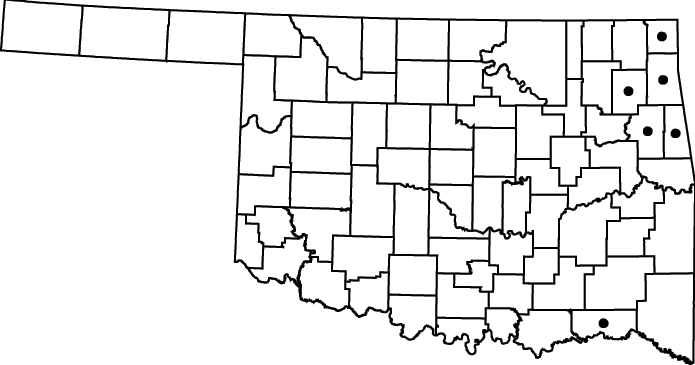
Note: The remaining species of Cardamine
in Oklahoma
are annual. Look for a small tuber
below ground.
NWI status:
OBL
Lakecress
(Neobeckia
aquatica (Eat.)
Greene)
Native perennial
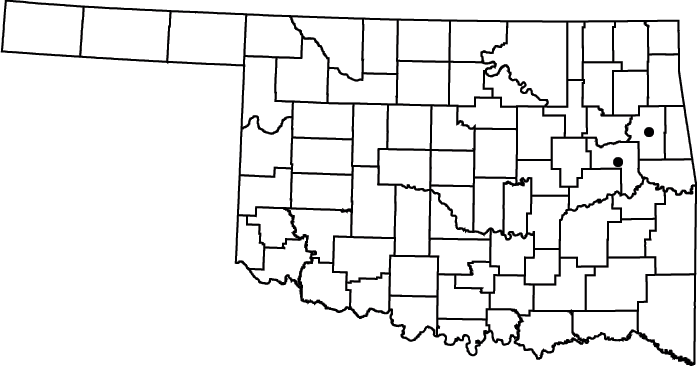
NWI status:
OBL
Watercress
(Rorippa
nasturtium_aquaticum
(L.) Hayek)
Native perennial.
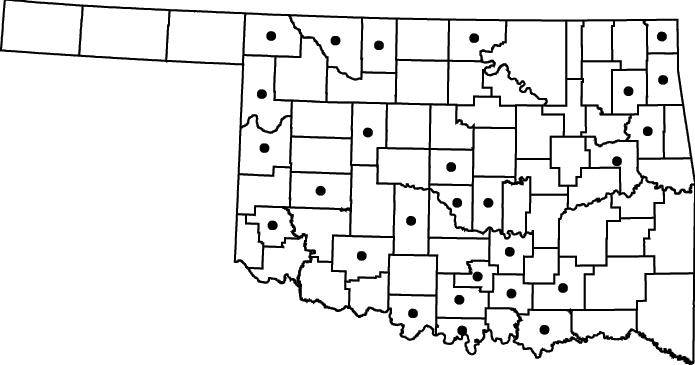
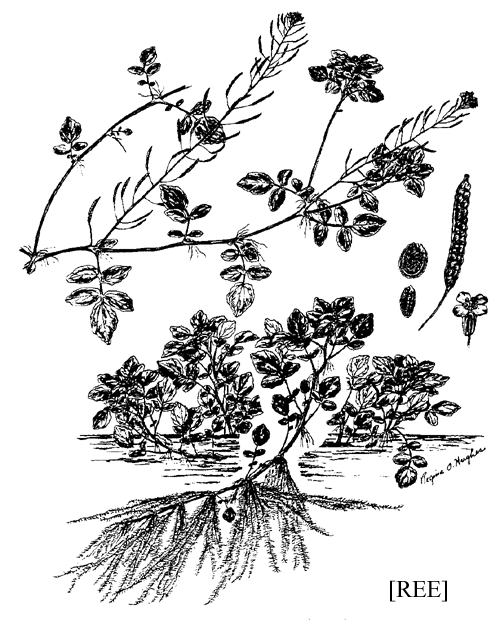
Notes: The leaves of this plant are high in
vitamins A and C
as well as iron and iodine. It is a
popular addition to salads.
NWI status:
OBL
Mints (Lamiaceae)
Horehounds (Lycopus spp.)
Note: The flowers of the these plants have fused
petals
with 4-5 lobes.
NWI status:
All horehounds are designated as OBL.
American
water horehound (Lycopus americanus
Muhl. ex W. Bart.)
Native perennial.
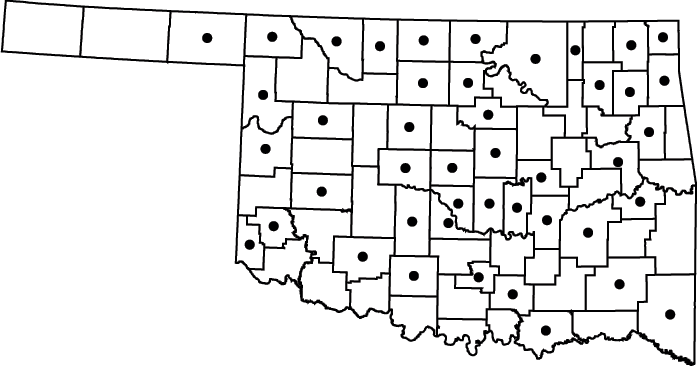
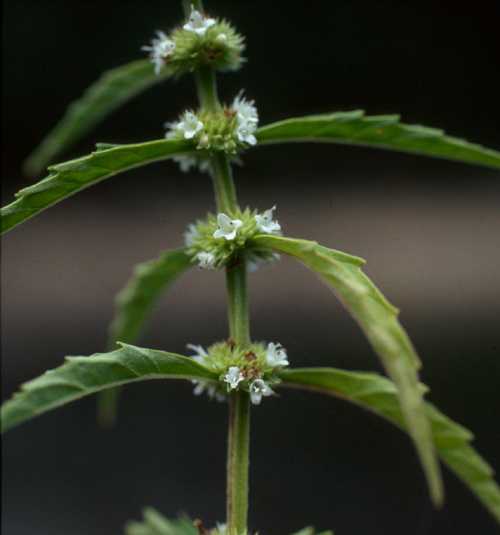
Note:
Nutlets shorter than surrounding the calyx (sepals).
Lower leaves deeply incised.
Taperleaf
water horehound (Lycopus rubellus
Moench)
Native perennial.
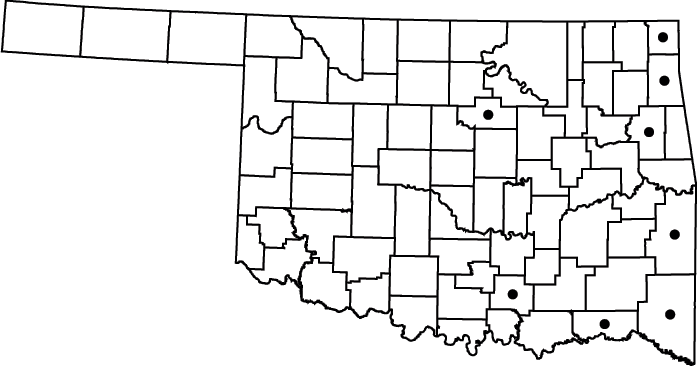
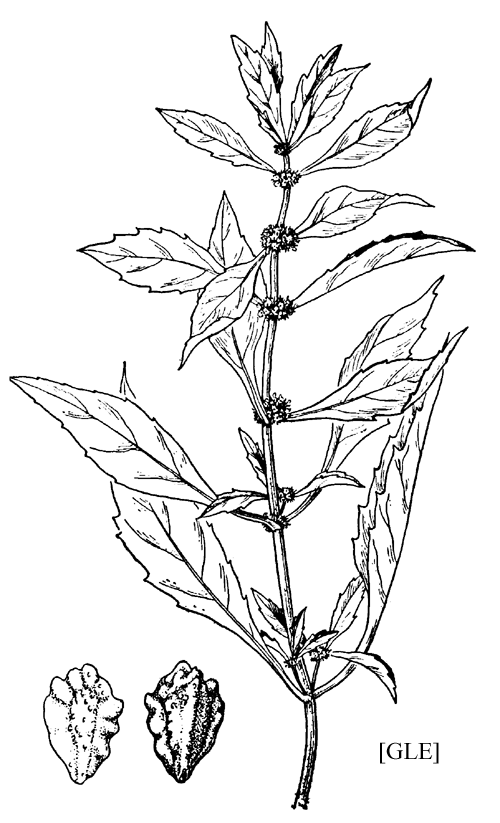
Note:
Nutlets shorter than surrounding the calyx (sepals).
Lower leaves toothed.
Northern
bugleweed (Lycopus
uniflorus
Michx.)
Native perennial.
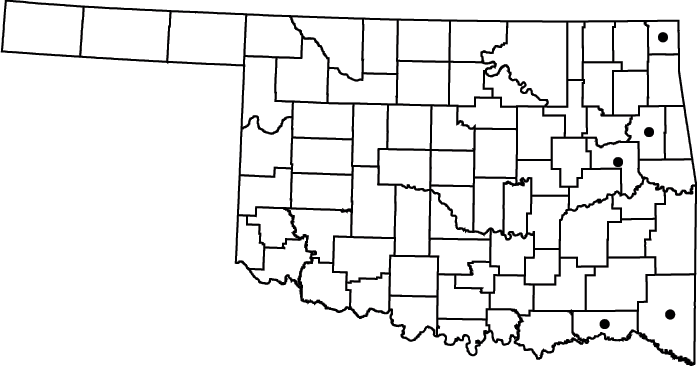
Note:
Nutlets exceed the calyx (sepals). Stems
without hairs.
Virginia
water horehound (Lycopus virginicus
L.) Native perennial.
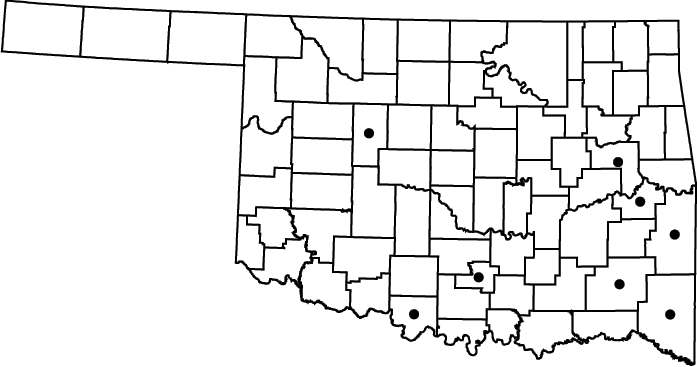
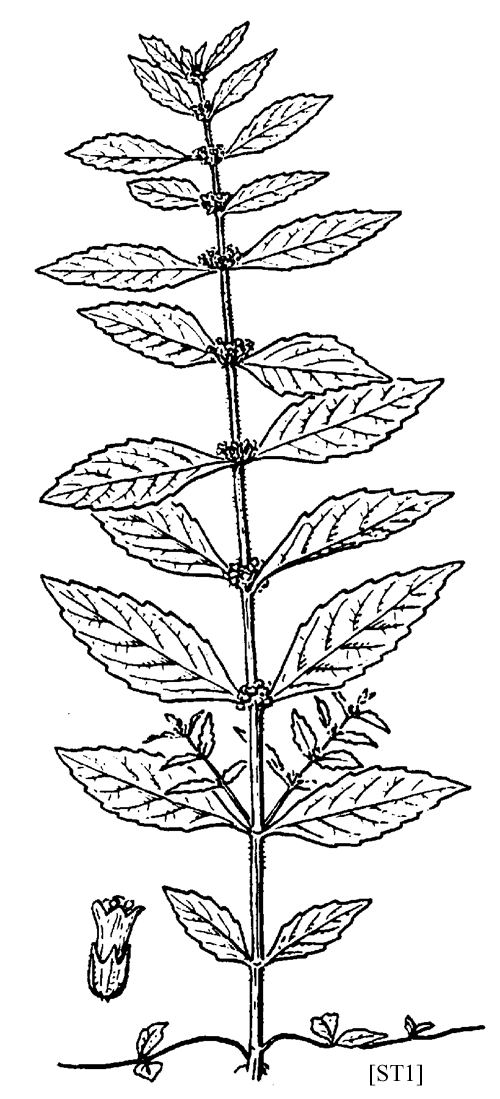
Note:
Nutlets exceed the calyx (sepals). Stems
with hairs. This
plants
was used by the Cherokee in the green corn ceremony.
Medicinal uses include snakebit remedy for humans
and dogs.
Narrowleaf
false dragonhead (Physostegia
angustifolia Fern.)
Native
perennial.
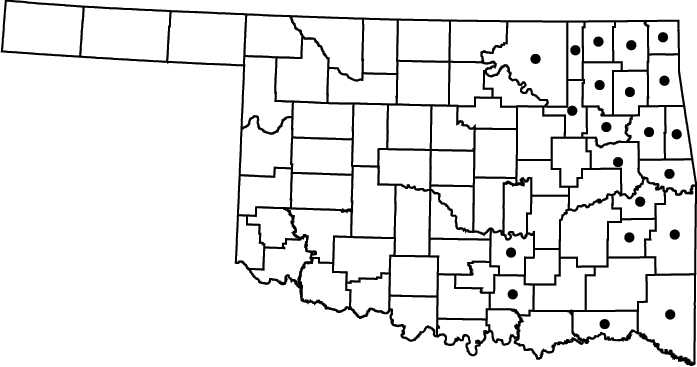
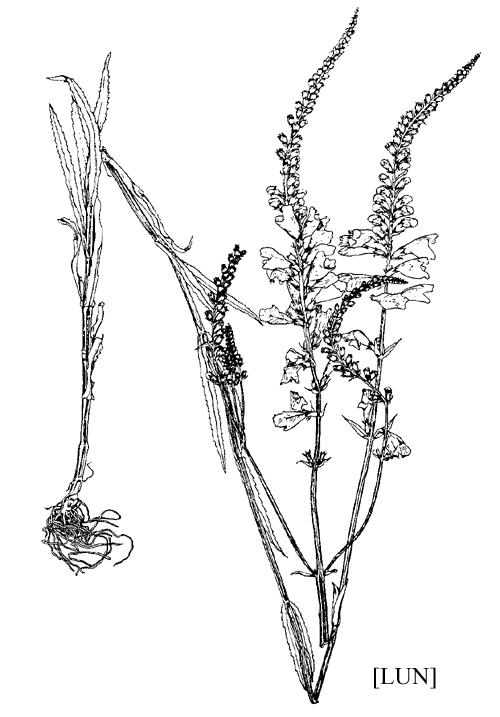
Note:
Another common
name for this species is obedient
plants, which is derived from the fact that when the flowers are moved
laterally from one side to the other, they stay in that position.
NWI status:
FACW
Lanceleaf
sage (Satureja
arkansana
(Nutt.) Briq.)
Native perennial.
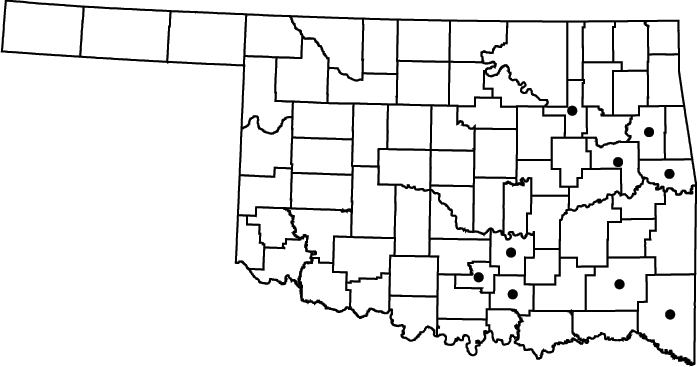
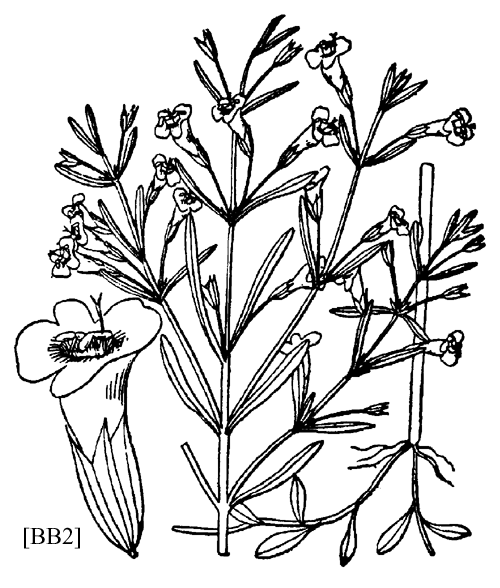
NWI status:
FACW
Evening primroses (Onagraceae)
Purpleleaf
willowherb (Epilobium
coloratum
Biehler)
Native perennial.
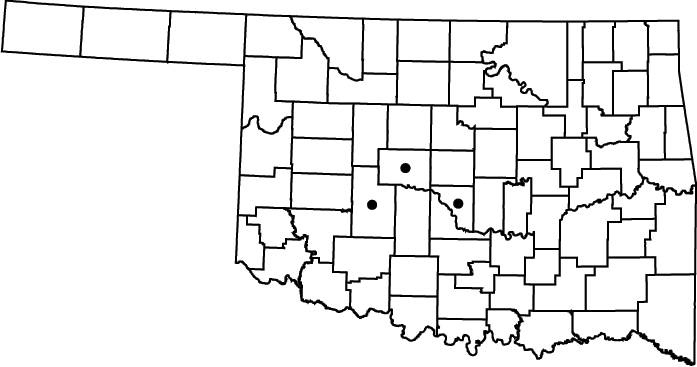
NWI status:
OBL
Madders (Rubiaceae)
Virginia
buttonweed (Diodia virginiana
L.)
Native perennial.
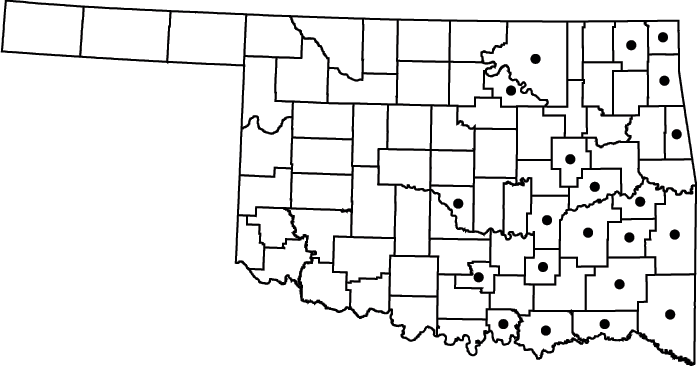
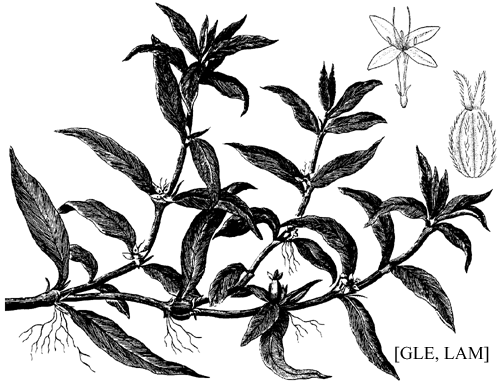
NWI status:
FACW+
Bluntleaf
bedstraw (Galium
obtusum
Bigelow)
Native perennial.
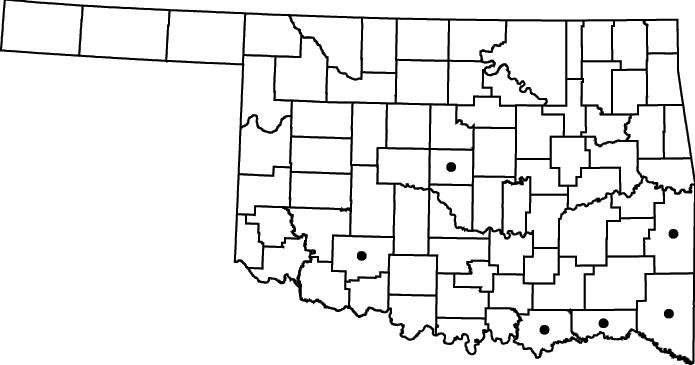
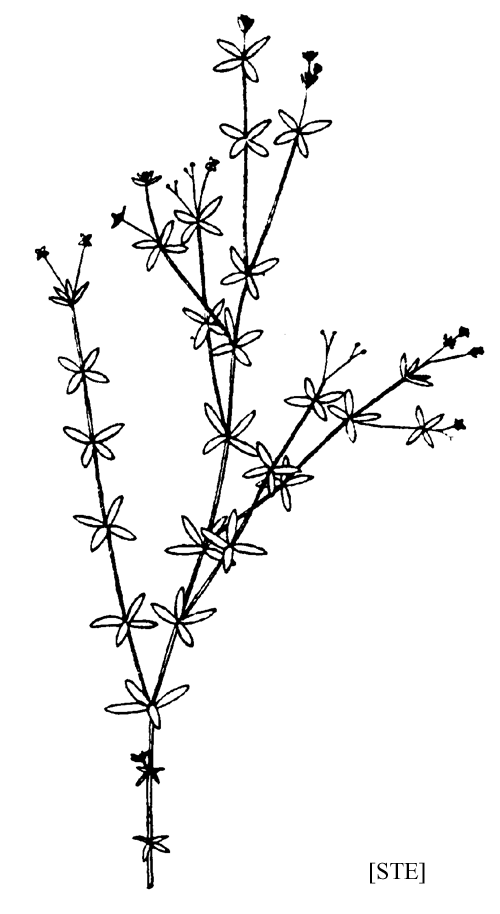
NWI status:
FACW-
Stiff
bedstraw (Galium
tinctorium L.)
Native perennial.
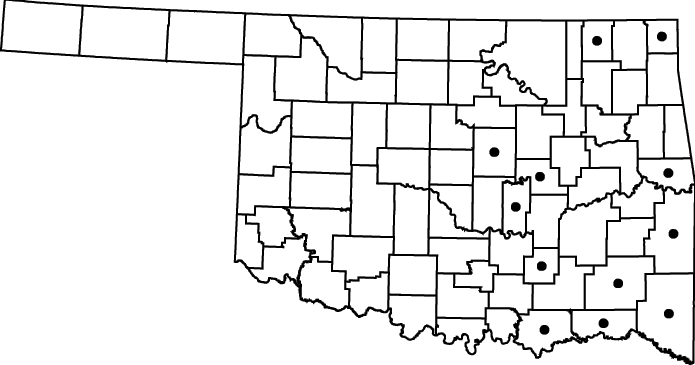
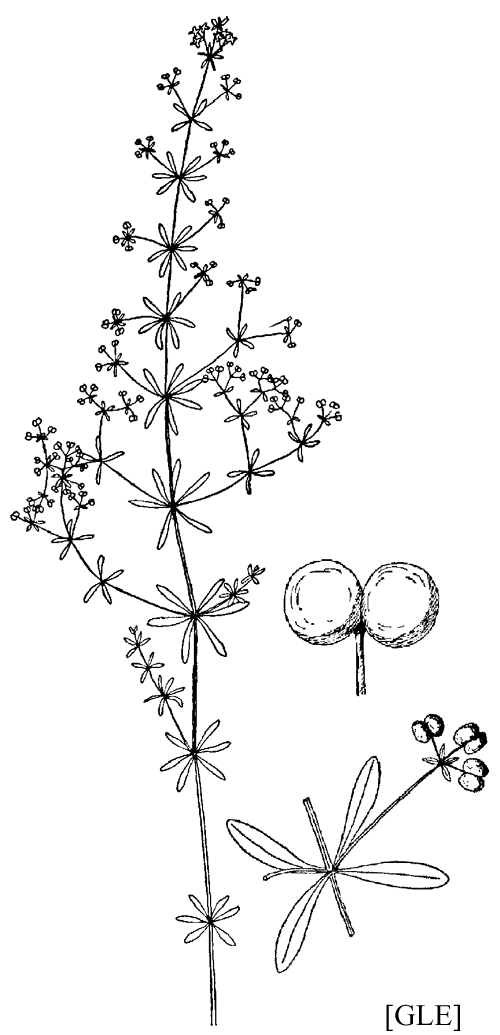
NWI status:
FACW
Bosc's
bluet (Oldenlandia
boscii
(DC.)
Chapman).
Native perennial.
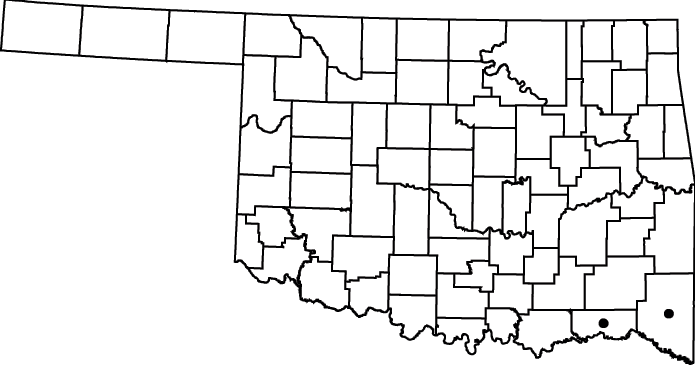
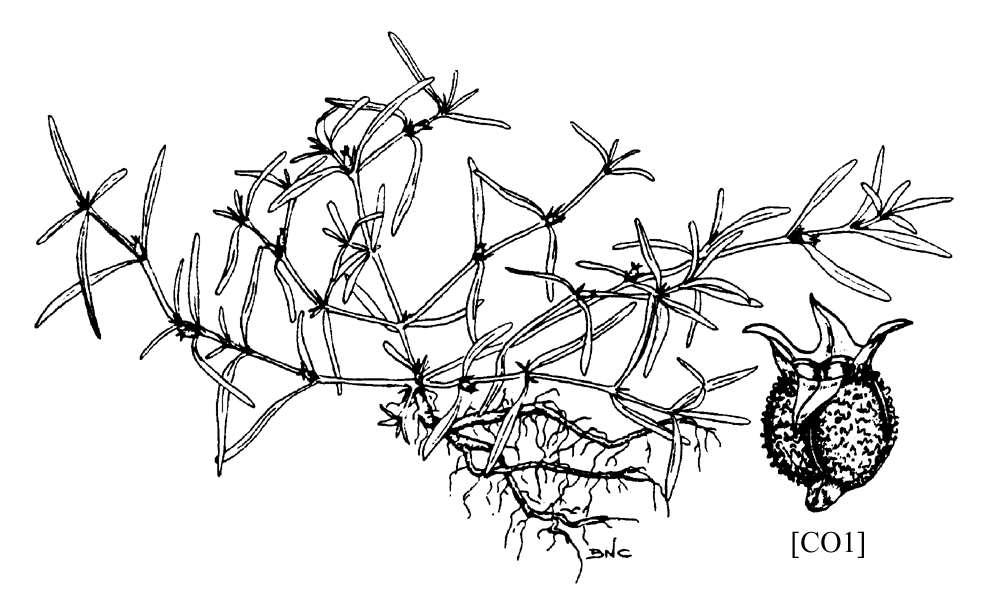
Note:
Stems usually hairless (glabrous)
One-flowered
bluet (Oldenlandia uniflora
L.)
Native annual.
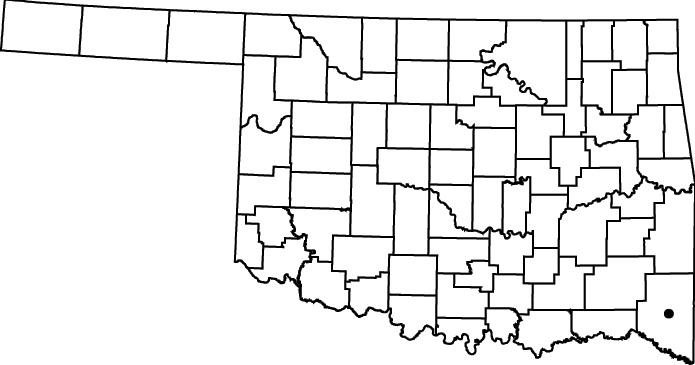
Note:
Stems usually with dense hairs (hirsute)
Vervain (Verbenaceae)
Note:
The flowers of the these species have fused petals with 4-5 lobes.
Wedgeleaf
frogfruit (Phyla cuneifolia
(Torr.) Greene)
Native perennial.
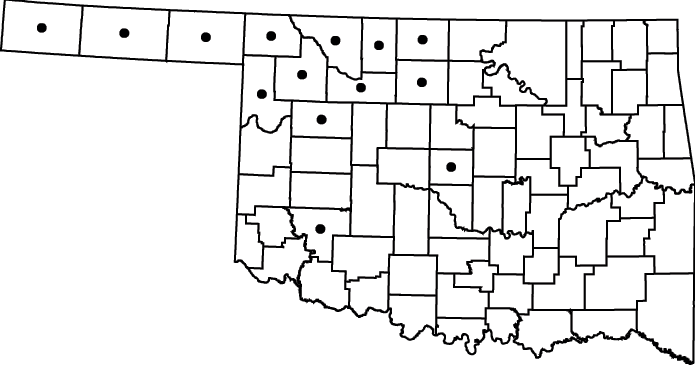
Note: Leaf blades are widest above the middle. Teeth, in one to four pairs, at the leaf
tip.
NWI status:
FACW
Lanceleaf
frogfruit (Phyla lanceolata
(Michx.) Greene)
Native perennial.
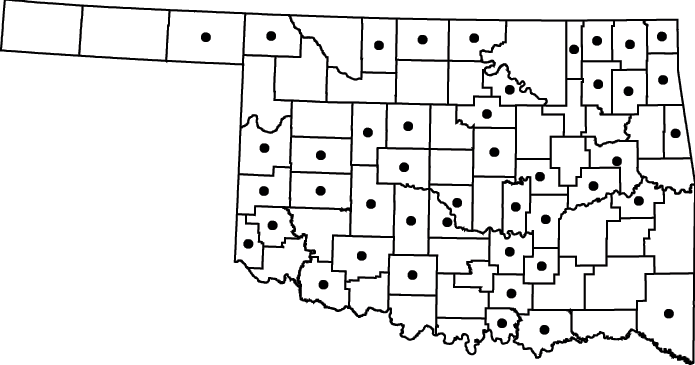
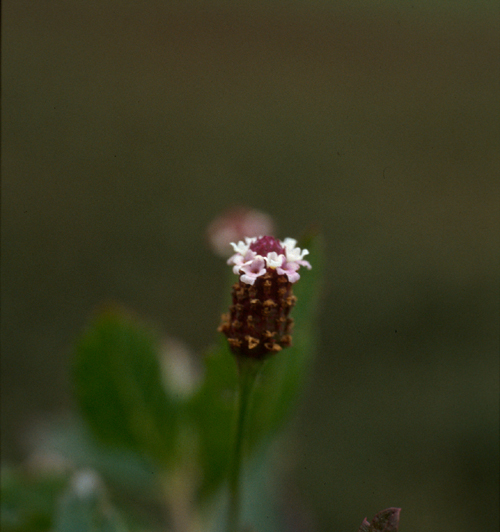
Note: Leaf blades are widest below the middle. Teeth (serration) extends extend from below
middle to tip.
NWI status:
FACW+
Turkey
tangle frogfruit (Phyla nodiflora
(L.) Greene)
Native perennial.
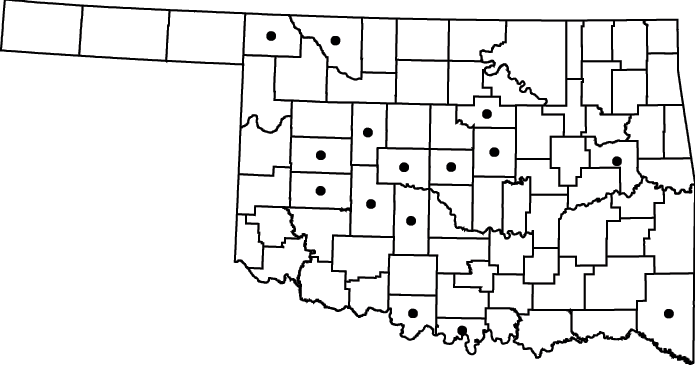
Note: Leaf blades are widest below the middle. Numerous pairs of teeth extending from the
middle to the leaf tip.
NWI status:
FACW.
Last update: 2/17/04
Comments to : Bruce Hoagland
bhoagland@ou.edu
Go to Oklahoma
Biological Survey Home Page
 Disclaimer Disclaimer
|

